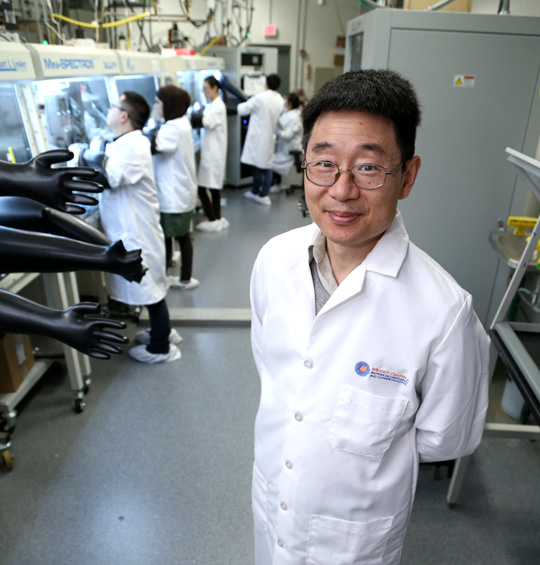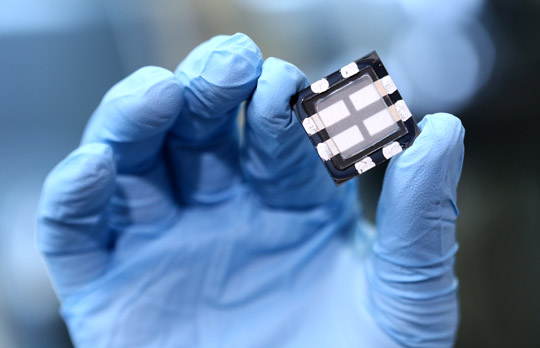With the depletion of nonrenewable energy sources and the increase of pollution, researchers have turned to finding ways to harness clean energy from cheap alternative sources.
Researchers at The University of Toledo have recently focused their investigation in the area of perovskite solar cell technology.

Dr. Yanfa Yan and his team make perovskite solar cells in the lab. Their research revealed a world record efficiency (low-bandgap) for the conversion of sunlight to electricity.
“Metal halide perovskites can effectively harvest sunlight and efficiently convert it into usable electrical power. They have the potential to be used for fabricating cheap and highly efficient solar cells,” he said. “Perovskite photovoltaic technology has attracted tremendous interest in the past several years.”
Current conventional solar cells are made out of materials such as silicon, a material more expensive than perovskite solar cells.
Yan explained that his research combined theoretical and experimental approaches to understand the fundamental mechanisms of the limitations of the perovskites and to develop processes and design new materials to overcome the limitations.
“Our ultimate goal is to help improve the energy conversion efficiencies of photovoltaic cells and solar fuel devices,” Yan said.

Dr. Yanfa Yan’s all-perovskite tandem solar cell combines two different solar cells to increase the total electrical power generated by using two different parts of the sun’s spectrum.
“We reported a method that can easily be followed by other researchers in the field,” Yan said.
The research has been published in the journal Nature Energy.
“The publication of this paper in Nature Energy shows a significant recognition of our work by the peers in the field of photovoltaics,” Yan said. “We are very proud of our achievements.”
He added, “We are thankful for collaborations with colleagues in the Wright Center for Photovoltaics Innovation and Commercialization at UT.”
“Dr. Yan and his team are doing outstanding work on this promising type of solar cell, paving the way for cheaper and more efficient ways to provide clean renewable energy to meet the needs of society,” said Dr. Karen Bjorkman, dean of the College of Natural Sciences and Mathematics; Distinguished University Professor of Astronomy; and Helen Luedtke Brooks Endowed Professor of Astronomy. “The faculty and researchers in the Department of Physics and Astronomy and UT’s Wright Center for Photovoltaic Innovation and Commercialization continue to lead the way in improving photovoltaic devices to address our growing energy demands through sustainable and renewable means.”